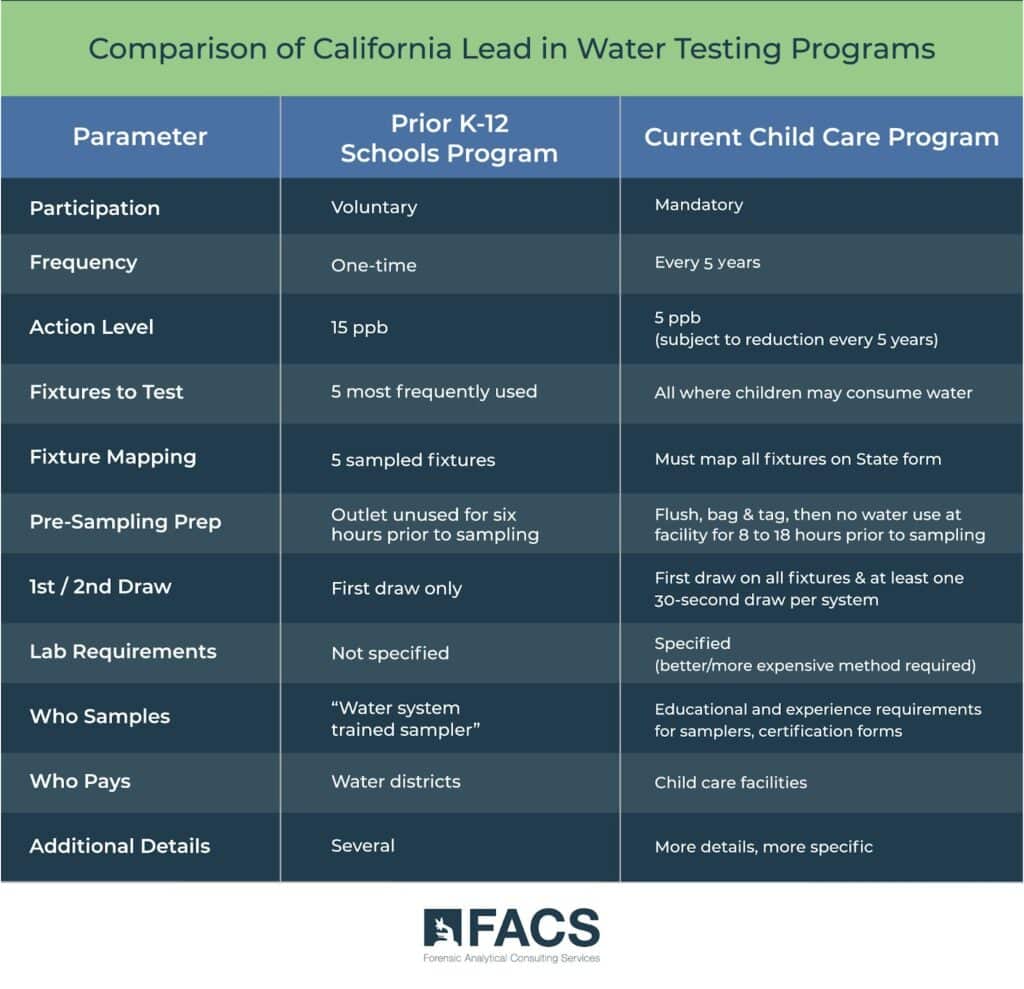School lead water testing…we did that already, didn’t we? Yes, but there are signs indicating there is more to come. The voluntary program launched by the State Water Resources Control Board in 2017 formally ended in July of 2019. However, recent legislation requires testing lead in water for all licensed Child Care Centers (CCCs) in California that were constructed before January 1, 2010 (see our previous article for a closer look at this legislation). These requirements are quite different and more involved than the prior testing program for schools. While these requirements currently only apply to licensed CCCs (many of which are located at schools), they may well foreshadow what could be next for schools where similarly susceptible young children are present. Here is a quick summary of some of the key differences which highlight why more may be on the way for schools.
As can be seen, levels that were “acceptable” before may not be acceptable now, as the action level is 3x lower. It may also very well be the case that prior sampling conducted does not look low enough for the current requirements.
Lead in drinking water presents very real public health risks, especially for children. In children, lead exposure can cause damage to the brain and nervous system, slowed growth and development, learning and behavior problems, and hearing and speech problems. No safe level of lead exposure in children has been identified. As discussed in our prior report on this topic, even the lower action level of 5 ppb may not be low enough for concerned stakeholders based on other existing guidance.
FACS water quality subject matter experts and qualified water samplers are ready to partner with you to stay ahead of this evolving issue and help protect your people, resources, and reputation. Give us a call at (888) 711-9998 or reach out using our contact form today.
